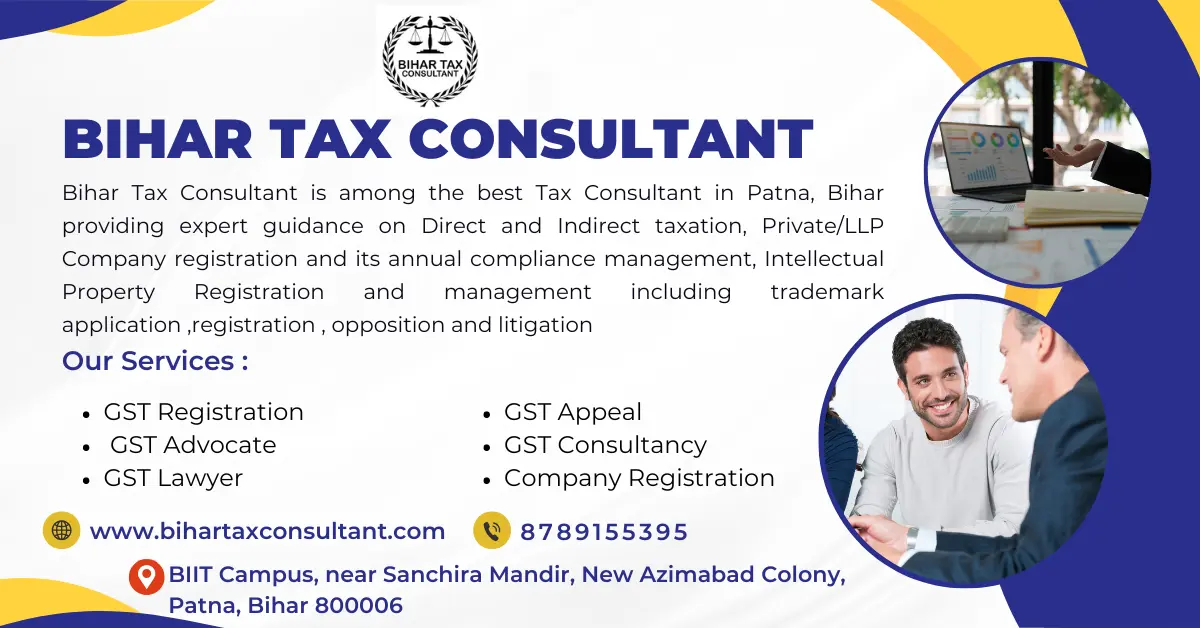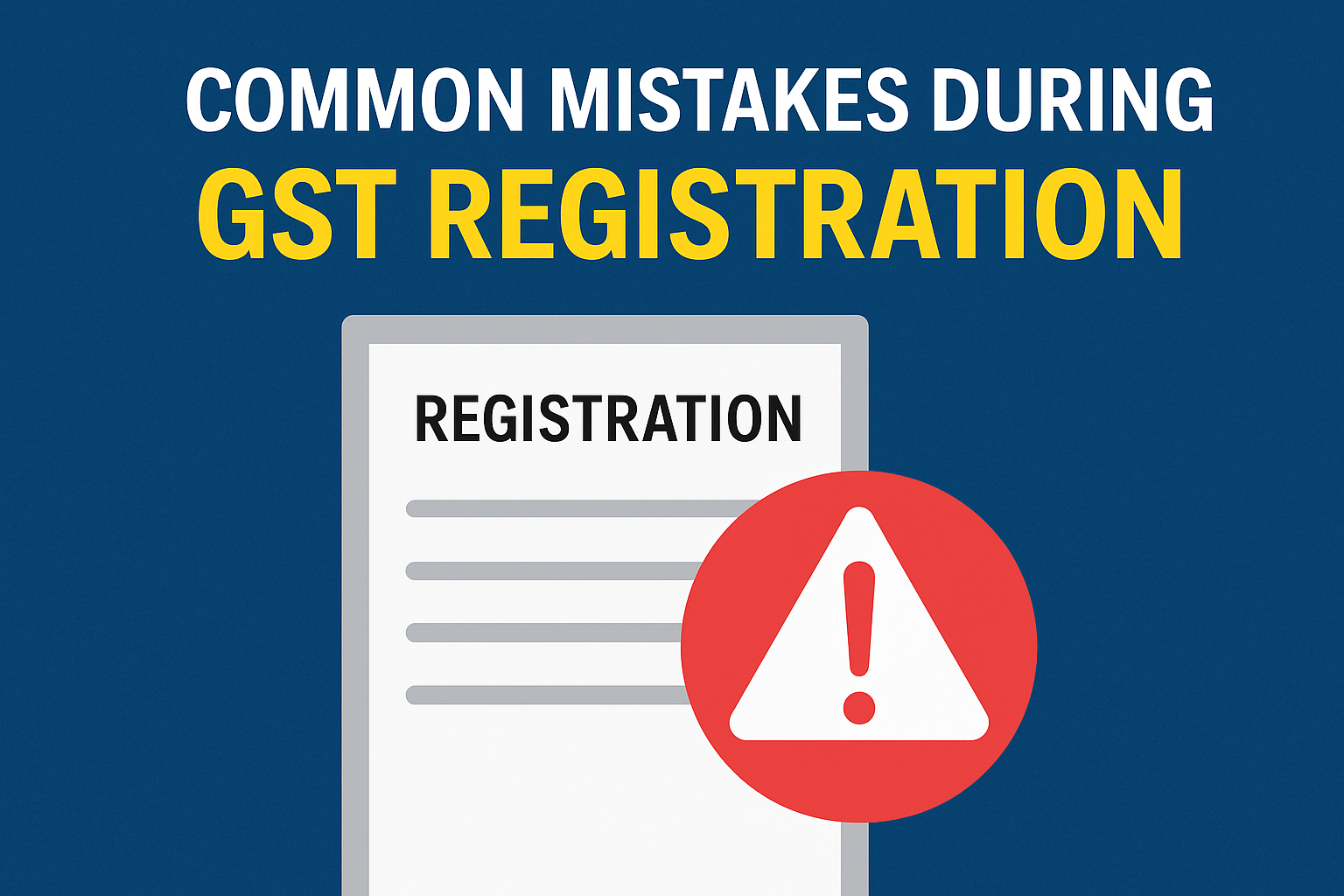
Introduction – Why GST Registration Accuracy Matters
The Goods and Services Tax (GST) is the cornerstone of India’s indirect tax regime. Every eligible business must register under GST to collect tax legally and claim input tax credits. However, a surprising number of applications get rejected or delayed due to small yet critical errors.
Understanding these common mistakes during GST registration can save you from unnecessary compliance issues, delays, or even penalties. Let’s explore them step by step.
Understanding the GST Registration Process
Before diving into the mistakes, let’s briefly revisit the registration flow:
Visit the official GST portal.
Select “New Registration” and enter your PAN, email, and mobile number.
Verify with OTPs and receive a Temporary Reference Number (TRN).
Log in with the TRN to complete Part B of the application.
Upload documents, submit the form, and await verification.
If approved, receive your GSTIN (GST Identification Number).
While this may seem straightforward, applicants often make small data-entry or document-related errors that cause significant problems.
Top 10 Common Mistakes During GST Registration
1️⃣ Incorrect or Mismatched PAN Details
PAN (Permanent Account Number) is the backbone of GST registration. If the PAN doesn’t match your business entity type (individual, partnership, company), the system auto-rejects your application.
Tip: Always verify PAN on incometaxindia.gov.in before applying.
2️⃣ Incomplete Business Address Proof
A common issue is submitting electricity bills or rental agreements that don’t match the PAN address or lack ownership proof.
Example: A Patna trader’s registration was rejected because the uploaded electricity bill carried a slightly different address. After submitting the corrected proof, approval came within 3 days.
3️⃣ Wrong Business Category Selection
Selecting an incorrect nature of business (e.g., choosing trader instead of service provider) can lead to future compliance mismatches or notices.
4️⃣ Uploading Invalid Documents or Formats
Applicants often upload blurred or oversized files, non-PDF formats, or documents without signatures.
Best Practice: Keep all documents in PDF format under 1 MB, and ensure clarity before uploading.
5️⃣ Errors in Bank Account Verification
Mismatch between bank details and PAN name can trigger rejection under Rule 8 of the CGST Rules, 2017.
Always use a business bank account that reflects your trade name.
6️⃣ Incomplete Aadhaar Authentication
Skipping Aadhaar verification delays the process, as officers then perform manual checks. Use the Aadhaar e-KYC option for faster approval.
7️⃣ Using Wrong Email or Mobile for OTP
Each verification step relies on valid contact credentials. Using another person’s contact can make OTP verification fail.
8️⃣ Misreporting Additional Business Places
Leaving out branch offices or warehouses during registration may violate Section 25 of the CGST Act, 2017.
9️⃣ Ignoring Digital Signature Requirements
Companies and LLPs must sign GST forms using a Digital Signature Certificate (DSC). Upload failures often result in incomplete submissions.
🔟 Submitting Application Without Review
Many applicants submit forms in haste without double-checking data. Even one spelling or numeric error may trigger a notice from the GST officer.
Impact of These Mistakes – Rejection or Delay in Approval
Errors in your GST application can cause:
Automatic rejection by the portal validation system.
Manual verification delays by GST officers.
Loss of input tax credit for missed registration periods.
Legal non-compliance penalties under Section 122 of the CGST Act.
How to Correct Errors After Submission
If your application is rejected:
Log in to the GST portal.
View the rejection notice in your dashboard.
Correct the specified fields or upload revised documents.
Reapply using the same PAN.
For minor errors post-registration, use Form GST REG-14 to make amendments online.
Expert Tips to Avoid GST Registration Mistakes
Verify all details from PAN and Aadhaar before starting.
Keep consistent spelling of names and addresses across all documents.
Use professional help from a tax consultant or CA for validation.
Maintain digital copies of every uploaded file.
Regularly check CBIC-GST Notifications for updated registration rules.
Relevant Legal Provisions & Rules
| Provision | Description |
|---|---|
| Section 25–27, CGST Act, 2017 | Rules for obtaining, verifying, and maintaining GST registration. |
| Rules 8–11, CGST Rules, 2017 | Procedure for new registration and Aadhaar authentication. |
| Notification No. 10/2017 – Central Tax | Prescribes documentation standards. |
| Circular No. 95/14/2019-GST | Clarifies online registration issues and corrections. |
| Case Reference: ABC Traders vs. GST Officer (2021) | Address mismatch led to rejection, later reversed upon valid proof. |
Conclusion – Ensuring Smooth GST Compliance
Avoiding common mistakes during GST registration can save time, effort, and legal trouble. Accuracy in data entry and documentation ensures seamless tax operations and enhances business credibility.
Need help with your GST registration or fixing rejected applications?
Contact Bihar Tax Consultant today for expert assistance and quick compliance.
Frequently Asked Questions
1. What are the most common GST registration mistakes?
Incorrect PAN, mismatched addresses, and invalid documents are frequent errors.
2. Can I edit my GST registration after submission?
Yes, limited fields can be amended using Form GST REG-14 on the portal.
3. How long does GST registration approval take?
Typically 3–7 working days, if documents and details are correct.
4. What happens if my GST application is rejected?
You’ll receive a notice specifying errors; you can reapply after correction.
5. Is physical verification required for all GST applications?
Only in specific cases where the officer suspects incorrect details.
6. Can a tax consultant help with GST registration?
Yes, consultants ensure proper document preparation and compliance.
7. Is GST registration mandatory for small traders?
Only if turnover exceeds ₹40 lakh (₹20 lakh for service providers).
8. Which documents are mandatory for GST registration?
PAN, Aadhaar, address proof, business proof, and bank details.
Author Bio
About the Author – Advocate Tabish Ahmad
Advocate Tabish Ahmad (B.A. LL.B., LL.M., Diploma in Cyber Law – GLC Mumbai) is a Certified Cyber Law Practitioner and practising Advocate at the Patna High Court. He specializes in Cyber Crime, GST Litigation, and Tax Appeals, with extensive experience in representing clients before judicial and quasi-judicial forums.
He serves as President of the Cyber Lawyers Association and is a Member of the Advocates’ Association, Patna High Court. As a Mentor at the Indian Tax Academy and JurisCrack, he guides young lawyers and students in cyber and tax law practice.
Author of several books on Cyber Crimes, Taxation, and GST, Advocate Tabish Ahmad is recognized for his practical insights on digital law, data privacy, and cyber fraud defence.

Advocate Tabish Ahmed

